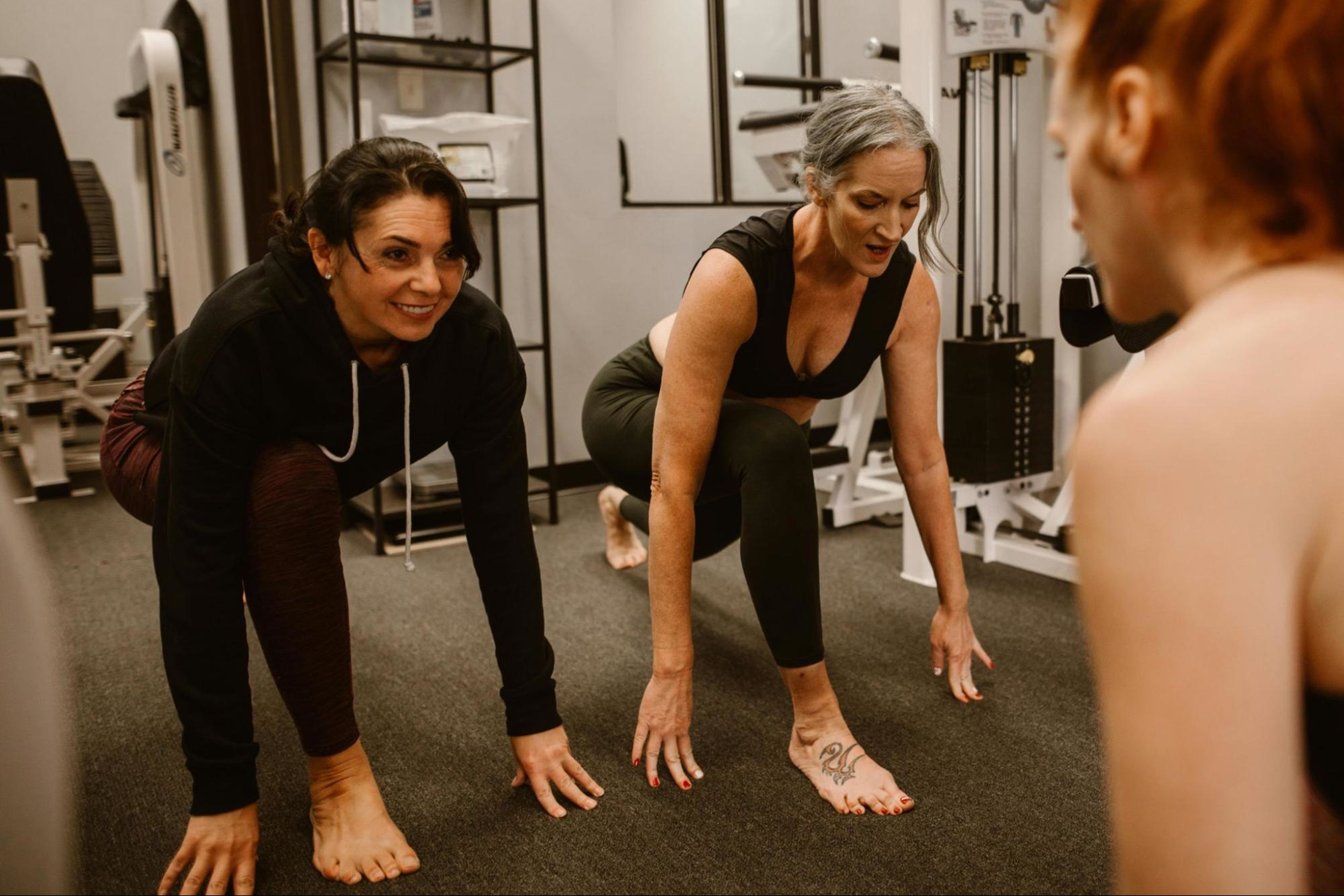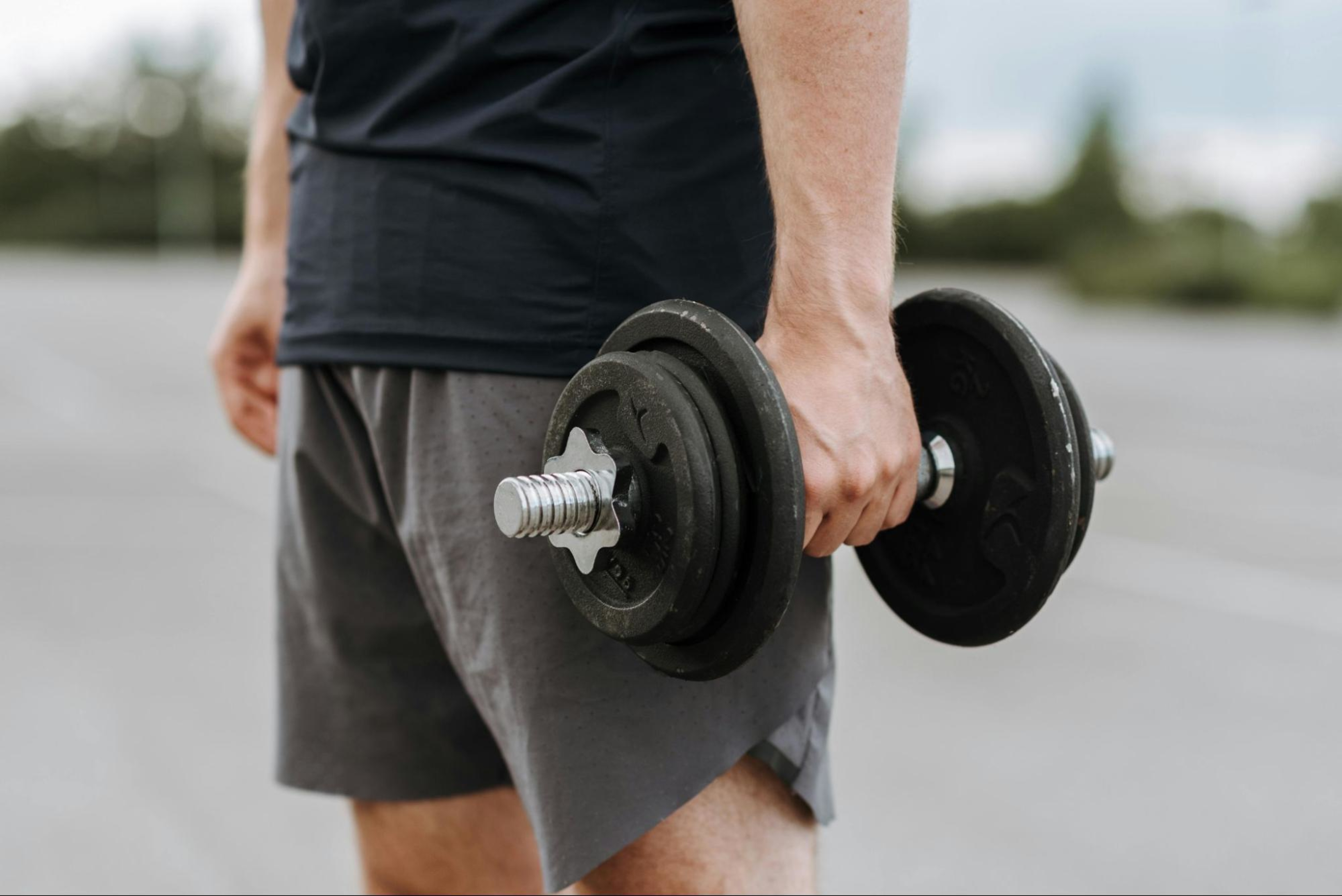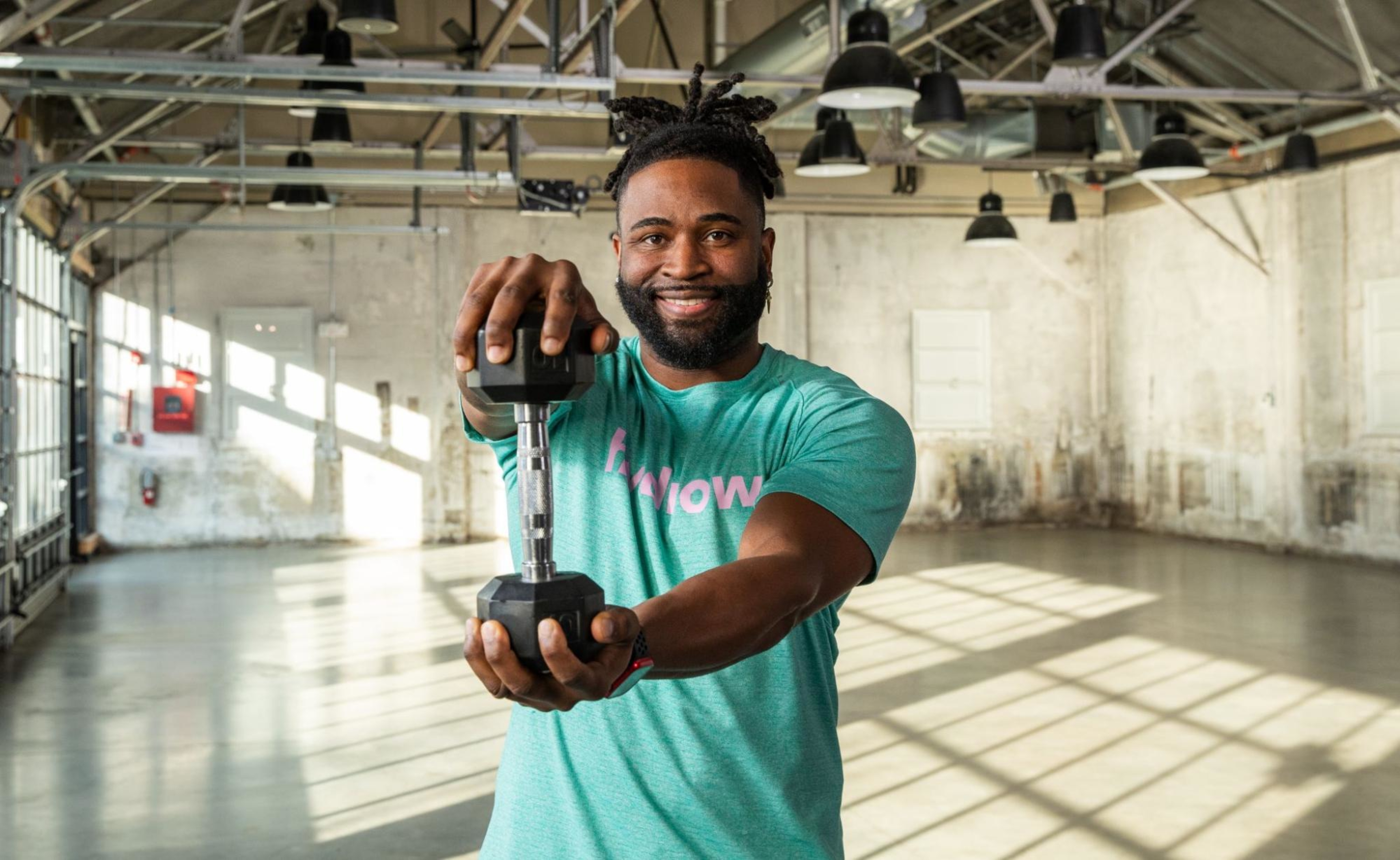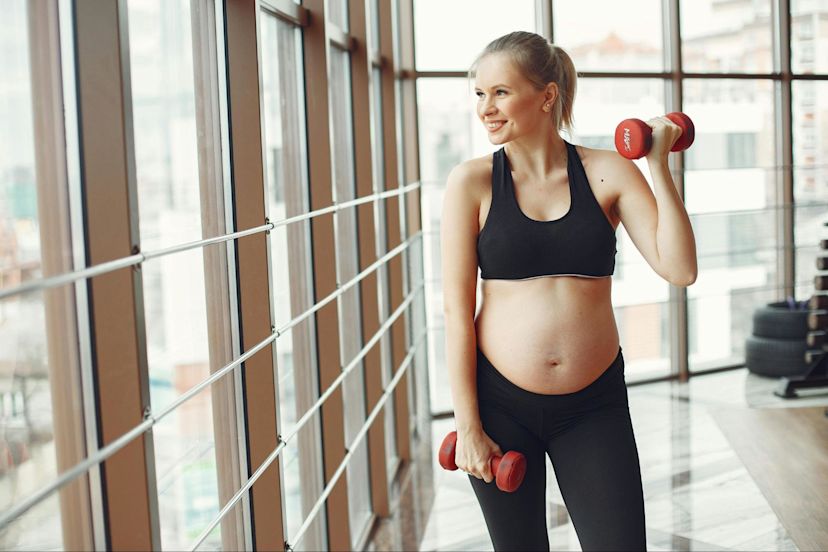How to Build Strength: A Beginner’s Guide to Getting Stronger

If you think back to the fitness world 15, 20, or 30 years ago, you’ll recall that there was an incredible emphasis on cardiovascular exercise, thinking it would all make us lean. But things have been changing in the past decade, with beginner and experienced exercisers alike recognizing and acknowledging the many benefits of strength training.
But knowing that it’s good for you and knowing where to start can feel very far apart—especially if you have never done strength training before. That’s where we come in. Read on for the ultimate beginner’s guide on how to build strength and get stronger by starting strength training, including:
Let’s go!
What is strength?
We know, that might sound like a silly question: Strength is being strong and having the physical ability to lift or move heavy things, right? But where does strength come from?
Strength is built in your musculoskeletal system, the network of bones, muscles, tendons, ligaments, and cartilage that holds you up. You need every part of this system to be sturdy, healthy and supported in order to engage in building strength—and fortunately, strength training works to simultaneously build every part.
But when we are talking about building strength, we are really talking about growing your muscles. This involves doing movements and exercises that force your muscles to contract against an outside resistance (such as weights or your own bodyweight), challenging them enough to create microtears in the muscle fibers. After your strength workouts, your body will send signals to your muscles to repair themselves and make your muscles stronger. You’ll find the best techniques for making that happen below.
The benefits of building strength
So yes, building strength will help you lift, move, and carry things. But there are many other benefits of strength training regularly, including:
Increased muscle mass
Stronger bones
Improved joint health
Better balance and mobility
Higher metabolism
Enhanced brain function
Lower risk of chronic illnesses
Increased muscle mass
As we mentioned, strength training builds muscle, which means you will have more muscle mass. This is important because everyone starts to lose a tiny bit of muscle mass every year beginning in your 30s. Strength training can help you maintain or even increase your muscle mass despite these natural declines, driving many of the following benefits.
Stronger bones
Strength training has similar effects on the bones as it does on the muscles. Strength-based exercises put good stress on the bones, prompting cells to go in and build strong bone. This increases bone density, lowering your risk of osteopenia (low bone density) and osteoporosis (when your bones are weak enough that it makes them more likely to break).
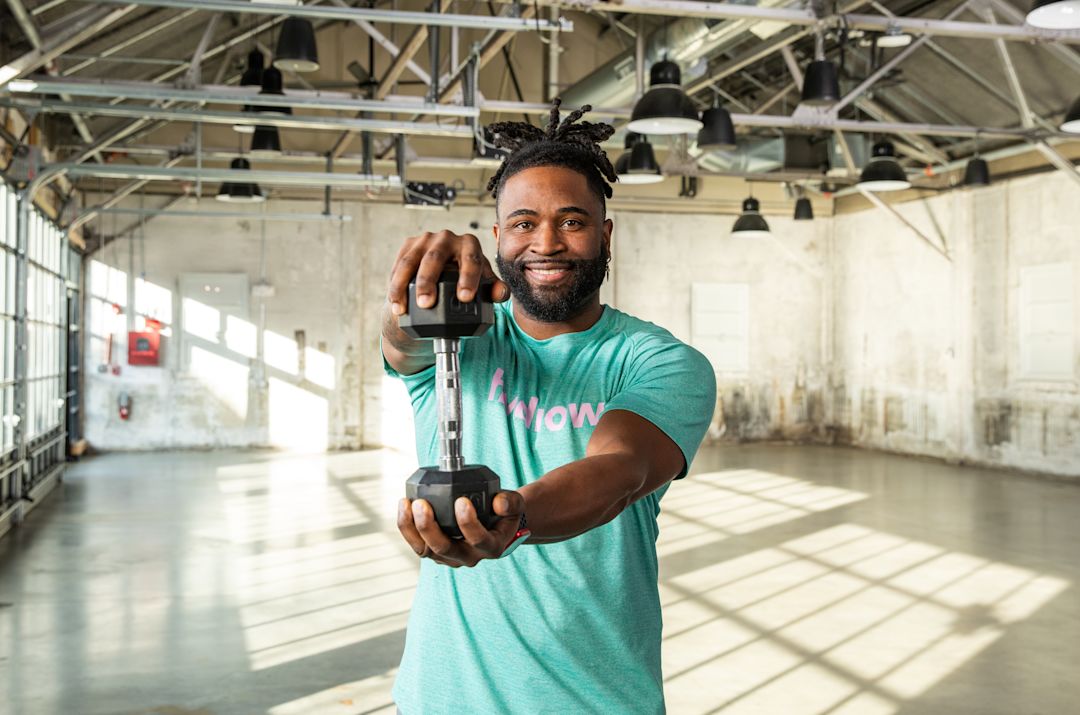
Explore Hydrow's library of strength training workouts.
Improved joint health
Muscles support joints, and the stronger your muscles are—and the stronger the bones that form the joints—the easier time they will have maintaining their full range of motion healthily and without pain or injury.
Better balance and mobility
Building strength supports your balance and mobility in a few ways. First, having strong muscles (particularly strong core and lower-body muscles) will help keep you stable in your daily life. Strength training also improves your coordination and your ability to control your muscles and your movements, making for better mobility as you age and reducing your risk of falls.
Higher metabolism
Have you ever heard the phrase “Muscle burns more calories than fat”? Well, it’s true. The higher your muscle mass, the bigger the boost to your metabolism.
Enhanced brain function
Studies have found that regular strength training boosts blood flow and reduces inflammation, leading to cognitive perks like better processing speed and memory and improved executive functioning, all of which can help protect against age-related cognitive decline.
Lower risk of chronic illnesses
Put all the above benefits together and what do you get? A lower risk of chronic illnesses like type 2 diabetes, heart disease, and even cancer, according to research.
The key principles of strength training
Before you begin strength training, there are a few key principles you should be familiar with. Some of them are common sense, while others are likely ideas you’ve heard of but didn’t know the terms for. Here are the key elements of a training program that will help you build strength.
Progressive overload
Specificity
Individuality
Reversibility
Rest and recovery
Progressive overload
The technical explanation of progressive overload is the idea that we need to repeatedly overload the body in order to create and sustain change. Now let’s break it down as it relates to strength training.
First, progressive. In order to build strength, your training needs to progress. If you do the same thing every session, week in and week out, you won’t see much change.
One important distinction here: It’s okay if change is not your goal. If you simply want to maintain your level of fitness and mobility, you can maintain consistency with the exercises you like. But in order to build strength and grow muscle, you need to challenge your body and change up your routine. Examples of how to do this include:
Increasing the number of reps you are doing.
Adding new exercises to your fitness routine.
Changing up the exercises in your fitness routine.
Making the exercises you do more challenging (such as going deeper in a squat).
Next, overload. Another way to think of overload is as challenge. Are you challenging your muscles? Are you struggling to complete your reps (but still able to do them safely and with proper form)? If so, you are likely achieving overload. Continuing to progress your workouts so that you are constantly reaching overload is crucial to getting stronger.

Efficiency for the win.
Work 86% of your muscles in just 20 minutes of rowing with Hydrow.
Specificity
The principle of specificity means that the results you see come directly from the type of exercise you do. If you want stronger arms, you need to train your arms. If you want to improve at push-ups, the best way is to perform upper-body strength exercises. If you want to jump higher, you need to train explosive lower-body movements like squats and plyometrics. You get out of strength training what you put in.
Individuality
Every person is different, and therefore, every strength training program is different. While there are exercises that are beneficial for everyone, such as planks and squats, your exercise regimen should be tailored to your body, your schedule, and your goals.
Reversibility
The principle of reversibility says that no strength gains are permanent. They require consistency to achieve and maintain. If you stop strength training, you will eventually lose the strength that you have built.
Rest and recovery
It is possible to overtrain and work your muscles so much that it leads to burnout or overuse injuries. Plus, as we mentioned earlier, strength is really built after your workout when your body is repairing the microtears in your muscle fibers. If you don’t allow ample time for these repairs to take place, you risk setbacks in your progress.
Rest and recovery can still be active, you just need to take breaks from strength training specifically and eat and sleep well.
Your guide to setting goals for weight training
One of the most effective ways to make sure you are incorporating all of the above key principles into your strength training program is by setting goals. If you establish a plan ahead of time, you’ll be able to measure your progress—plus, it will be easier to stick with your strength training regimen.
Here are five examples of goals you can set and work toward as you build strength:
Weight-based goals
Rep-based goals
Exercise progression
Fitness test
Body composition goals
Weight-based goals
One of the easiest goals you can set is around the weight or resistance you are working with. The National Academy of Sports Medicine recommends training with the 10% rule in mind, or the idea that you should not progress any more than 10% each week.
So, for example, say you are doing an exercise with 10-pound weights. Per the 10% rule, your goal may be to do the same number of reps with 15-pound weights after five weeks.
Rep-based goals
Similarly easy to track, you can aim to increase the number of reps you are doing of a certain exercise with a certain amount of weight. The 10% rule is a good one to follow here as well.

Did you know?
Over 90% of Hydrow members are still active one year later.
Exercise progression
Another great way to measure your progress is by using certain exercises as a measuring stick. For example, say you can do 10 push-ups on your knees when you start training. You may set the goal that after a certain number of weeks, you want to be able to do five push-ups on your toes.
Fitness test
Creating a fitness test for yourself is a good way to measure your strength gains as well as how your overall fitness has improved. Select three exercises, such as squats, push-ups, or sit ups, and see how long it takes you to complete a set number of reps with proper form. Then after a certain number of weeks, repeat the test and see if you have improved performance.
Body composition goals
While strength training has the ability to change the shape of your body for the better, it doesn’t lead to immediate changes on the scale. Instead, focus on the way that your clothes are fitting as a measure of your progress over time.
How to build strength: Five tips for beginners
Ready to get started? Excellent! Here are five tips for beginning a strength training routine.
Master proper form first: Form is crucial when it comes to effective strength training. If you aren’t using proper form, you not only open yourself up to potential injury but you also might not be working the muscles you think you’re working, which will slow down your results.
Gradually increase resistance: The key here is the gradual part. Aim to master exercises with light weights or just your body weight first, then increase from there.
Take your time: While cardiovascular fitness is just as important as strength in the scope of overall health and wellness, we’re just talking about building strength and muscle here, so feel free to take as much time as you need to complete your reps and complete them well.
Listen to your body: This is extra important when you are starting out, as you don’t want to create bad habits or suffer an injury that sidelines you before you even really get in the game. If something doesn’t feel right, stop and check in with yourself.
Eat to succeed: It won’t matter how good your form is or how challenging your workouts are if you aren’t fueling your body properly. Aim for a mix of protein, healthy fats, and complex carbohydrates, plus plenty of water, in order to stimulate muscle growth.
The best exercises for building strength
If you’re looking to build strength quickly, the best exercises for doing so are ones in which you are moving your entire body and utilizing multiple muscle groups (when possible) with every rep. Here are some of our favorite exercises for building strength:
The best lower-body strength exercises
1. Squats
Stand with your feet slightly wider than shoulder-width apart, with your feet slightly turned out (not parallel).
Lower your body by bending or hinging at the hips and knees, keeping your chest up.
Descend until your thighs are parallel to the ground while maintaining an engaged core
Push through the soles of your feet with an emphasis on driving through the heels as you return to the starting position.
2. Deadlifts
Stand with feet hip-width apart, barbell in front of you, similar to the squat setup.
Hinge at your hips and bend your knees to grip the bar.
Keep your back flat as you lift the bar by driving through your heels.
Stand tall, then lower the bar back down with control.
3. Walking lunges
Stand tall, with hands on hips and feet shoulder-width apart.
Step forward with right leg, bending knee until parallel to the floor.
Pause briefly, then bring left foot forward and repeat lunge on left leg.
Continue alternating legs and lunging with each step.
4. Reverse lunges
Start with your feet together.
Take a large step to the back and bend both knees, then push off the back foot and return to standing.
Alternate sides.
5. Side lunges
Start standing with your feet hip-width apart and hands at your chest or on your hips.
Take a big step to the right, keeping your toes pointing forward.
Bend your right knee and push your hips back, keeping your left leg straight.
Lower until your right thigh is parallel to the ground (or as low as comfortable).
Push off your right foot to return to the starting position.
Repeat on the other side.
6. Romanian deadlifts
With an overhand or mixed grip, hold a barbell or dumbbells in front of you with a slight bend in your knees.
Hinge or “lift” at the hips, lowering the weight while keeping your black flat.
Engage your hamstrings and glutes to return to standing position.
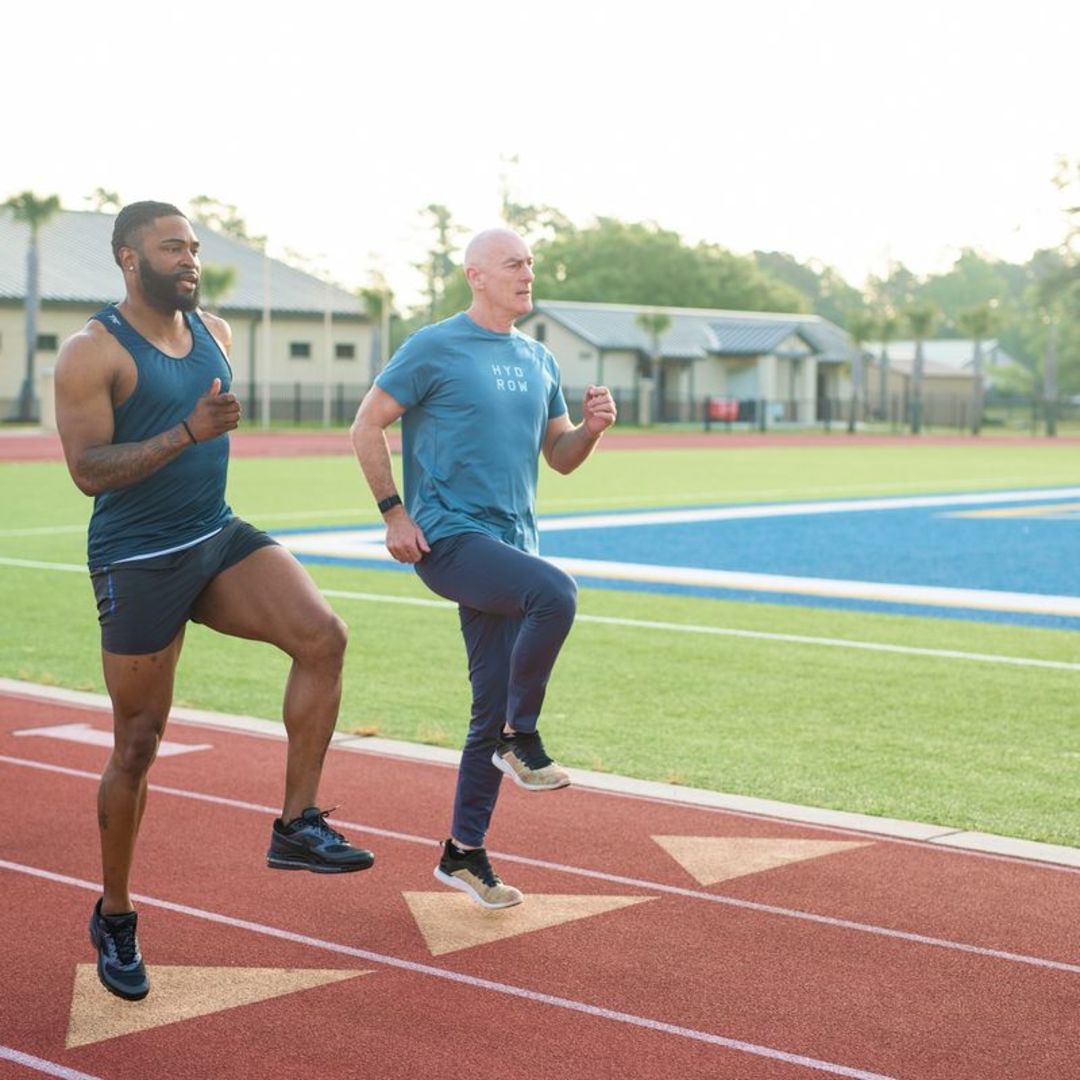
What’s your workout style?
Take our quiz and get a customized 14-day training program.
The best upper-body strength exercises
1. Push-ups
Start in a plank position, keeping hands shoulder-width apart.
Bend elbows to lower your body toward the floor.
When your chest is close to the ground, push back up to starting position, keeping body straight.
Repeat for desired reps.
2. Bent-over rows
Stand with a barbell or dumbbells and bend over, hinging at the hips.
Pull the weight toward your torso, squeezing your shoulder blades together.
Lower the weight back down with control.
3. Chest presses
Lie flat on a bench with your feet on the floor and core engaged.
Hold the weights above your chest with arms fully extended, palms facing forward.
Lower the weights slowly toward your chest, keeping elbows at about a 45-degree angle.
Stop when elbows are just below the bench level or when arms form a 90-degree angle.
Press the weights back up to the starting position, squeezing your chest at the top.
Repeat for your desired reps.
4. Shoulder presses
Stand or sit with your feet shoulder-width apart.
Hold a dumbbell in each hand at shoulder height.
Engage the core for back support.
Press the weights overhead until your arms are fully extended.
Lower the weights back to shoulder height.
5. Triceps kickbacks
6. Bicep curls
Stand with feet hip-distance apart.
Hold weights in front of thighs, palms facing out.
Brace abs and bend elbows to curl weights toward shoulders, keeping elbows close to the torso.
Slowly lower back down, keeping tension on the muscles.
Repeat.
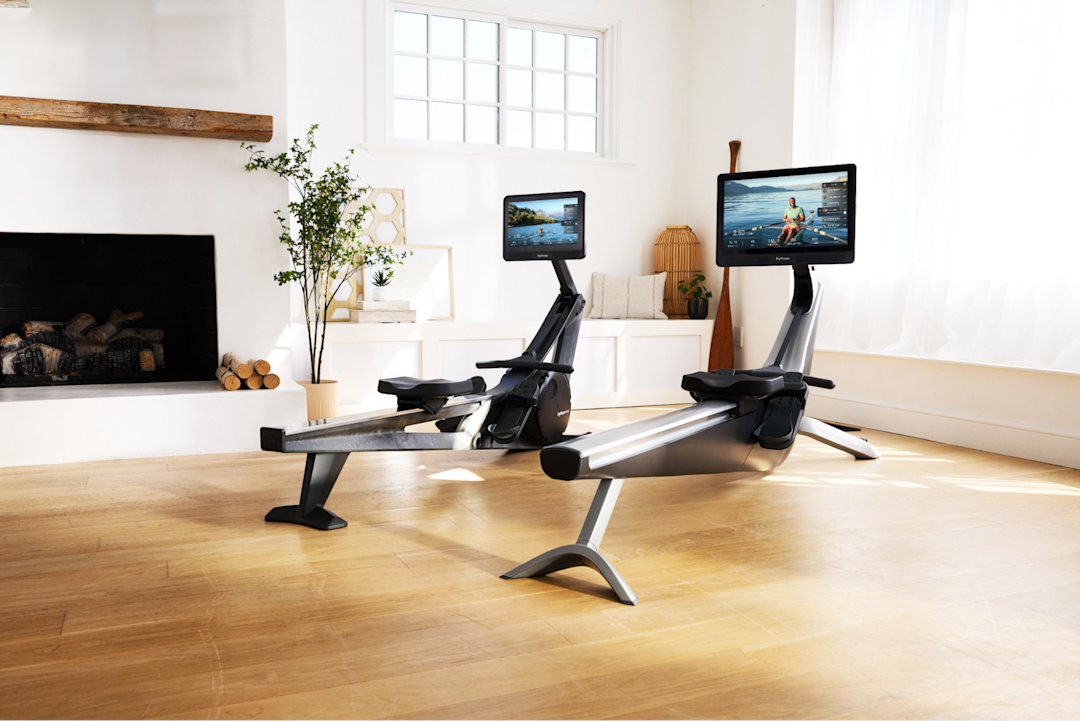
Wondering if a Hydrow rowing machine is right for you? Get answers in our FAQ guide.
The best core-focused strength exercises
1. Forearm plank
Lie on your stomach on a yoga mat or other cushioned surface.
Prop yourself up on your toes and your forearms, with your elbows right under your shoulders.
Lift your body until you form a straight line from your heels to your hips to your head. Don’t let your hips sag or lift them too high.
Hold this position for your desired amount of time.
2. Straight-arm plank
Start on all fours, then extend your legs behind you, balancing on your hands and toes.
Place your hands directly under your shoulders, arms fully extended.
Keep your body in a straight line from head to heels—don’t let your hips sag or rise.
Engage your core, glutes, and legs to stay stable.
Hold the position for your desired time, breathing steadily throughout.
3. Supermans
Lie face down with arms and legs extended.
Engage core and lift arms and legs off the ground as high as possible while maintaining straight arms and legs.
Pause briefly at the top.
Slowly lower back to the starting position.
Repeat.
4. Crunches
Lie on your back with your knees bent and feet flat on the floor.
Place your hands behind your head or cross them over your chest.
Engage your core and lift your head, neck, and shoulders off the floor.
Pause at the top, squeezing your abs.
Lower back down slowly with control.
Repeat for your desired reps.
5. Reverse crunches
Lie on your back, feet flat, knees bent.
Lift both feet three inches off the ground.
Bring your knees to the body, lifting the hips off the ground.
Lower your legs to the starting position and repeat.
6. Kettlebell swings
Stand tall with feet shoulder-width apart and the kettlebell in both hands hanging in front of you.
Hinge your hips, and with a straight back and slightly bent knees, gently swing the kettlebell between your legs.
Contract your glutes and push your hips forward to stand straight while letting the kettlebell swing forward as far as it will go naturally.
Common mistakes to avoid when building strength
If you aren’t following these tips for beginners looking to build strength, you might be making one of these five common mistakes that go hand in hand. Here they are so you can avoid them:
Winging it on form. Yanking and tossing weight around is not going to make you stronger if you aren’t doing it properly.
Adding resistance too fast. Trying to lift too much weight too soon puts you at a much higher risk of injury.
Speeding through reps just to finish your set. If you’re doing this, chances are you’re shortening your range of motion and not getting the most out of every rep.
Ignoring your body. Strength training should feel challenging, but it should never feel like you’re moving your body in a way it wasn’t meant to move. If you get this feeling, don’t ignore it.
Not considering your diet. You won’t see the gains you desire if you don’t give your body what it needs.
How long does it take to build strength?
In general, you can expect to see improvements in as little as two to three weeks, and experience strength and muscle improvements in as quickly as three to four weeks with consistent strength training. Of course, how quickly you get noticeably stronger is going to depend on a number of factors, such as how often and how intensely you are training and what your diet looks like.
You can do it!
We know that was a lot, but if you’re considering embarking on a new strength training journey, we promise it’s worth it. Building strength will help you age more gracefully, plus make your day-to-day life easier.
As long as you are keeping the key principles in mind, taking care to challenge yourself, allowing your body to recover, and setting goals that will help you progress, you’ll see change and gains before you know it.
Looking for a way to incorporate more strength training into your exercise routine?
Hydrow offers guided strength training workouts for every fitness level, all led by world-class Athletes who coach you through each movement and help you stay consistent. Additionally, our rowing workouts target 86% of your muscles with every stroke, delivering full-body training and real results.
Explore Hydrow’s strength workouts and see how far you can go.
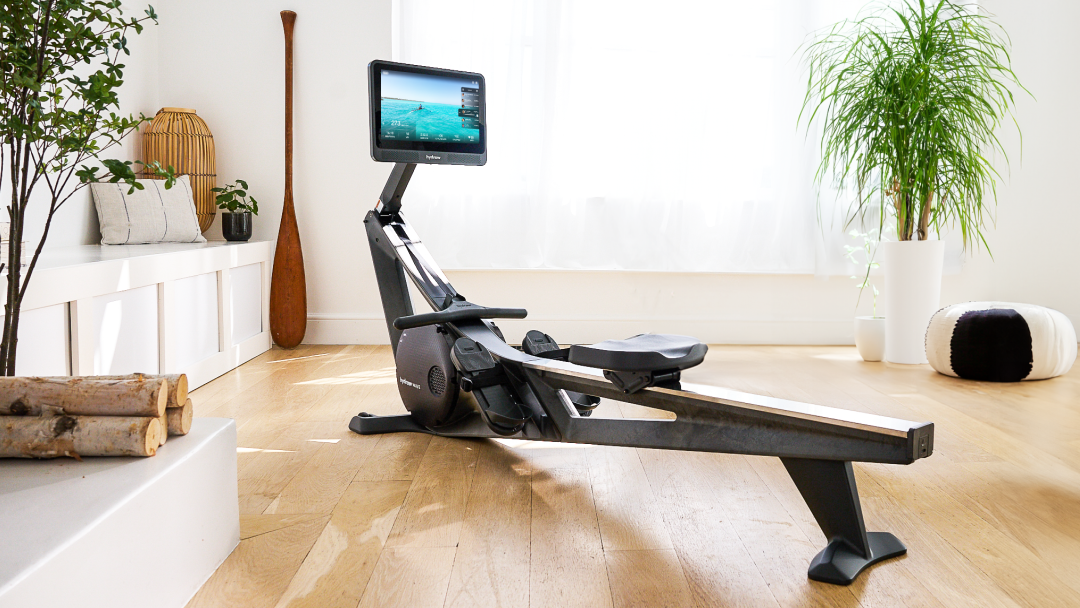
Real strength keeps moving
Learn how working out with Hydrow can help support a fuller, more active life.

